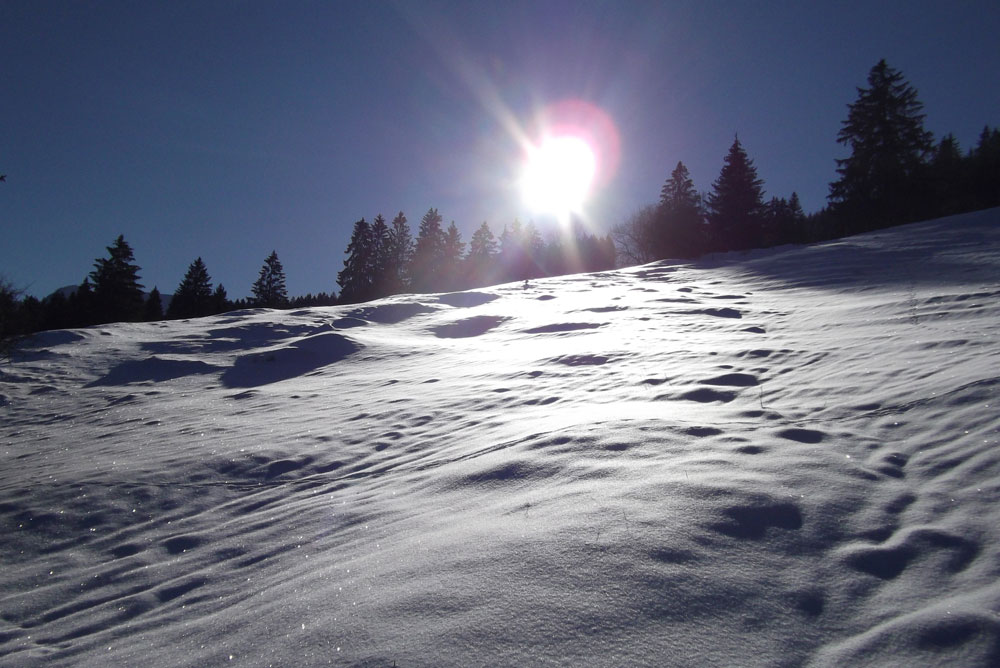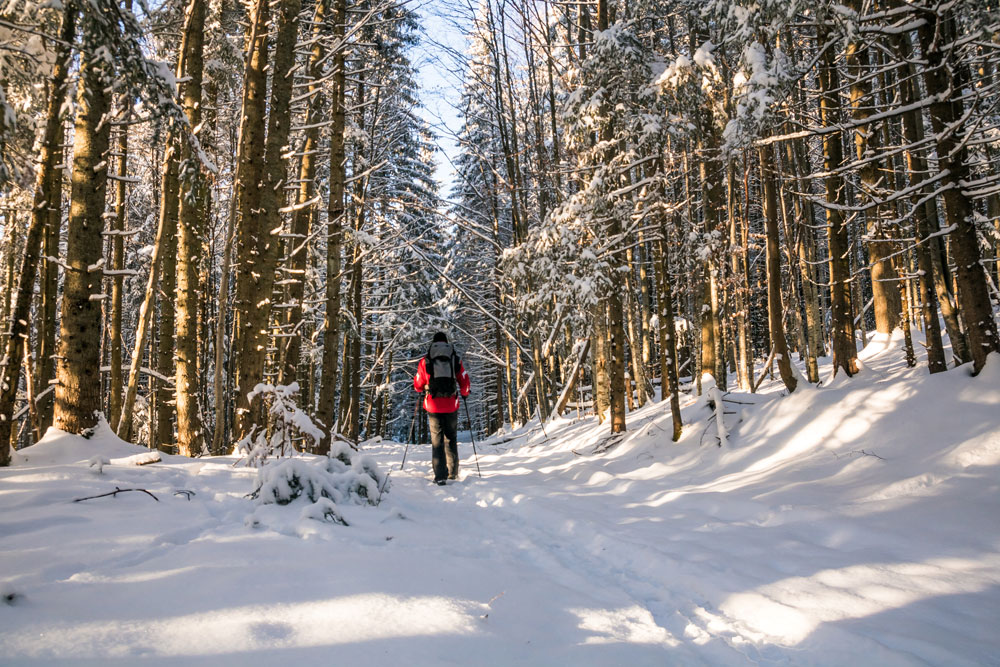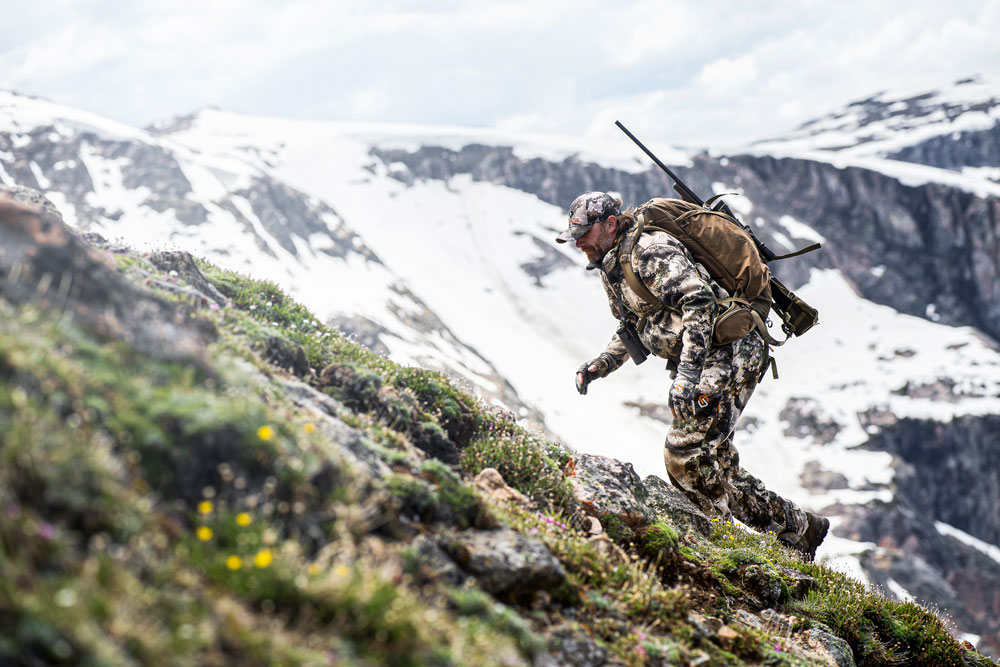Winter offers some of the most breathtaking sights nature has to offer. However, going for a winter hike requires a little more care and preparation than during the warmer seasons. These tips can help you get the most out of your winter treks.

1. Go out earlier and keep your trip shorter.
During the winter, it is essential to remember that the day is shorter than during other seasons. In the northern hemisphere, a winter day has less than 12 hours of daylight, and temperatures can fall dangerously low during the night.
Plan the start of your trek in the morning and return before sundown, preferably during the afternoon. If the sun is setting and you are starting to lose light, keep a headlamp at hand, as well as spare batteries.
2. Don’t go out alone.
Always make sure that someone else knows where you’re going. Hiking by yourself is an option if you are already well-versed in navigating the trail; otherwise, it’s best to bring someone with you—preferably someone with more experience.
Whether you plan to hit the trail alone or not, tell your friends or your family about your trip, document the route you intend to take, and write down the times you plan to leave and return. In case of emergencies, this information is invaluable to rescue services.
3. Dress appropriately.
Layering your clothing correctly for hiking is essential regardless of the season. But, during winter, you must prepare for the dangers of cold temperatures such as hypothermia. As a general rule, your winter hiking clothes should keep you warm and dry.

Footwear - The most essential element of a hiker's gear is their hiking boots. You should have a pair of insulated hiking boots that are comfortable and which fit you properly for the winter. Avoid trail shoes and trail runners, as they are too light, are not waterproof, and will not protect your feet efficiently.
Socks - As with boots, your socks must fit and cushion your feet properly. Hiking socks should be of the right height to avoid abrasion from your boots and feature a slightly cushioned sole for added support. Different fabrics are available; try socks with moisture-wicking technology to keep your feet free from perspiration. Some find it is helpful to wear two pairs—a thinner pair under thicker socks—to prevent rubbing and blisters.
Tops - You should have at least three layers to trap body heat: a comfortable, long-sleeved, moisture-resistant undershirt that will serve as your base layer; a long-sleeved insulated jacket; and a waterproof ski jacket or softshell jacket as the outer layer.
Bottoms - For all situations, waterproof pants made of durable synthetic materials are the best choice. If it's very cold or snowing, you may want to opt for a set of thermal underwear underneath.
Hands - Plan for two layers of gloves. A pair of light, breathable gloves—either wool, fleece, or synthetic—can be used as a base layer. For your outer gloves, select waterproof high-dexterity gloves, such as ski gloves. If temperatures drop and you don't mind trading some dexterity for extra warmth, consider mittens instead.
4. Eat properly and stay hydrated.
Exercise of any kind in a cold environment means burning calories much quicker than in warmer temperatures, as your body also has to keep you warm. It can be easy to underestimate how many calories you’re burning while on the trail.
To keep your body fueled, bring high-calorie food that you can eat on the go, such as dried fruit, high-fat granola bars, beef jerky, coconut chips, or a traditional trail mix. You may also want to consider a thermos with hot chocolate or coffee to warm you from the inside out.
Staying hydrated is very important as well. Remember to drink water at regular intervals, without waiting to feel thirsty. Because your body's thirst response is reduced by up to 40 percent, during winter months, if you wait until you feel thirsty, you may already be dehydrated.
For a full day of hiking, you need at least one gallon of water. Carrying bottled water or canteens is an option; however, it can be quite heavy. It may be tempting to drink from a river instead, but it may be unsafe to drink straight from a stream. In such cases, add easy-to-use water purification tools to your pack, such as a pump filter or a special water bottle with a built-in filter or ultraviolet light purifier.
5. Know where you are and know where you’re going.
It may be tempting to use your phone's map application or even a dedicated GPS device, but these devices may not always work when you're far away from civilization. Most importantly, they can run out of power.
The paper map is still the best and safest option. Trail maps are inexpensive, weigh almost nothing, and are still valuable tools to have when you cannot rely on your electronics.

6. Carry the essentials in case of emergency.
Not every trip goes as planned, and the nearest available help may be dozens of miles away. For emergencies, essential tools to bring on a hiking trip include the following:
A first aid kit - It is important to have at least one person who can administer first aid and is familiar with a first aid kit’s contents. Although many pre-packaged first-aid kits are available for sale, it is often recommended to make your own, based on your needs.
A knife or a multi-tool - There are countless uses for a good knife or multi-tool, such as opening your food, cutting lengths of bandages or moleskin, and prying or scraping. The possible uses for a good knife are nearly endless.
A fire-starting tool - The best way to build a fire depends on your current situation; a suitable campfire for cooking isn't the same as one for emergency warmth. Regardless of your need, you'll want a reliable fire-starting tool. Prioritize flint-and-steel, striker-rod-type starters as they are compact, durable, and capable of starting fires in wet weather.
A space blanket - Space blankets are an excellent addition to any hiker's kit. They are very light and compact but provide adequate sheltering from the elements.
The Final Word
Enjoying nature in the winter months does not have to be dangerous; all it takes is a little preparedness. If you love spending time in the great outdoors and have a passion for hiking, browse the Mossy Oak website for more tips, tricks, and advice.






























